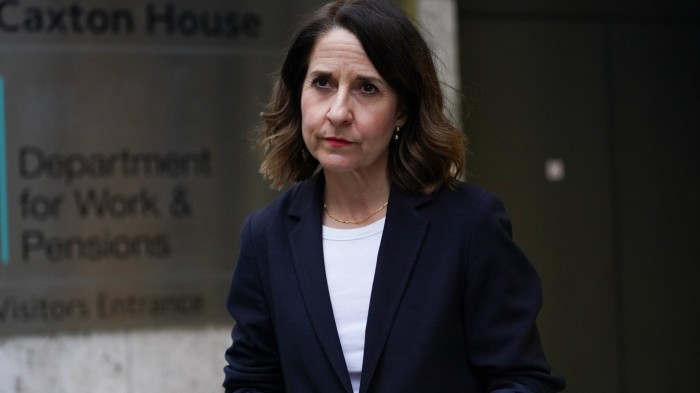Unlock the Editor’s Digest for free
Roula Khalaf, Editor of the FT, selects her favourite stories in this weekly newsletter.
A surge in UK health-related benefit claimants has been caused by design flaws in the welfare system, not by worsening health outcomes or long waits for treatment, a committee of peers has said.
The House of Lords economic affairs committee called on ministers to act urgently to prevent the annual cost of incapacity and disability benefits spiralling from its current level of £64.7bn to a projected £100.7bn by 2029-30.
Its findings challenge the government’s assumptions ahead of a promised review of the welfare system, while highlighting the strain the rising benefits bill is placing on other spending on public services.
In a letter to the work and pensions secretary Liz Kendall, published on Monday, the committee said there was “no convincing evidence” that the rising benefits bill was owing to deteriorating health or NHS waiting lists.
“People without work have incentives to claim health-related benefits; and once in receipt of them, have neither the incentive nor support to find and accept a job,” it warned.
Lord George Bridges, committee chair, said: “This is an enormous and growing social problem. The [government’s] timetable doesn’t display the urgency required.”
He added that while ministers had promised to publish plans for welfare reform in the spring, this would be too late for any savings to be factored into this year’s spending review.
The committee’s diagnosis of the problem is different from the narrative Kendall gave when she set out reforms to support for jobseekers in the autumn, billed as a plan to “Get Britain Working”.
She described a post-pandemic health crisis that had made Britain the only country in the G7 to see its workforce shrink, with 2.8mn people counted as economically inactive for health-related reasons.
The peers said problems with the official labour market data had clouded the picture, and that it was not clear whether overall labour market inactivity was any higher now than in 2019.
There has, however, been an increase of 1.2mn working-age people receiving health-related benefits since early 2020, which now totals 3.7mn.
The committee said this reflected strong incentives for people to claim incapacity support in preference to jobless benefits because of a “stark financial disparity” in the help on offer.
People assessed as unfit to work or to look for work could double their income and escape tough conditionality by moving from jobseekers’ allowance to incapacity benefit, the committee said. They then risked big income losses if they went back to a job that did not work out, it added.
New claims for incapacity benefit have not risen enough to explain the rise in the number of recipients. This is mostly due to the fact that a higher share of claims are approved and fewer people withdraw or leave the system after a reassessment.
The committee said the process for assessing claims needed to be more rigorous, but the government also needed to give people more support to return to work, and ensure they did not lose by accepting a job.
It would need to reform both unemployment and incapacity benefits, because of the interaction between the two, Bridges said, potentially easing the jobless benefits criteria while tightening sickness benefits.
Some of the committee’s recommendations are similar to proposals by the previous work and pensions secretary, Mel Stride, which have not been implemented, partly because of a legal challenge to the consultation process.
A government spokesperson said it was “determined to get Britain working again”, had set out first steps to boost employment already and would consult on reforms to health and disability benefits in the spring.
“We have been clear that the current welfare system needs reform, so it is fairer on the taxpayer and people get the support they need,” they added.



